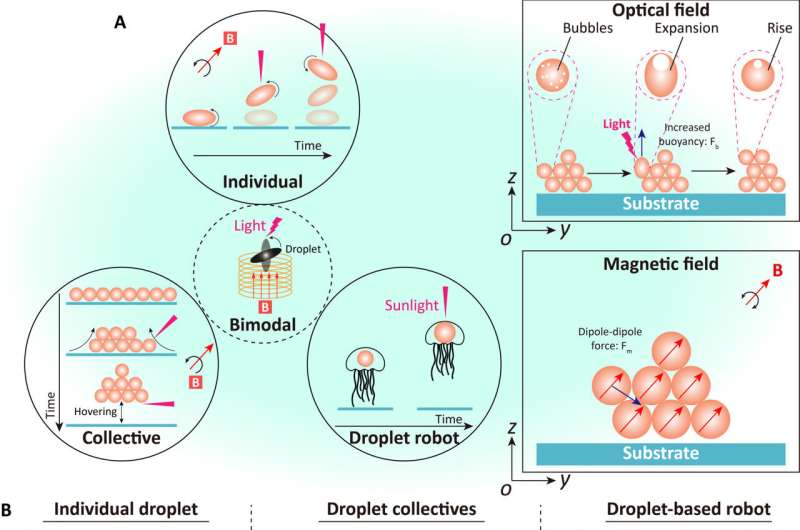July 19, 2024 report
This article has been reviewed according to Science X's editorial process and policies. Editors have highlighted the following attributes while ensuring the content's credibility:
fact-checked
peer-reviewed publication
trusted source
proofread
Researchers use light to control ferrofluid droplet movements in water

A team of engineers at the Max Planck Institute for Intelligent Systems, the Chinese University of Hong Kong and the Gwangju Institute of Science and Technology has found that ferrofluidic drops in a tank of water can be forced to rise in desired ways using light. The study is published in the journal Science Advances.
Prior research has shown that ferrofluid droplets can be manipulated in water using a magnet. In this new study, the research team has shown that they can be manipulated by a light source as well.
Ferrofluid droplets are made by immersing magnetic particles in a drop of oil. Prior research has shown that they can be made to travel across a flat surface by dragging a magnet beneath them. If the droplets are heated, bubbles held inside of them expand, making the bubble bigger and more buoyant.
Noting their buoyancy properties, the researchers created ferrofluid droplets and placed them in a tank filled with water. They then shined a light on the droplets, warming them relative to the water, resulting in increased buoyancy. The droplets rose to the surface.
The research team then used a laser instead of a simple light source, allowing more control of the ascent of the droplet and found they could control its movement through a maze.
Due to the controllability of the droplets, the research team refers to them as droplet robots, or a form of soft robot. When the droplets are covered with a hydrogen shell, they resemble jellyfish-like robots, which can be driven by sunlight (focused through a magnifying glass) or, as they demonstrated, with laser beams.
The team suggests such robots would be capable of carrying small payloads, possibly making them useful vehicles to deliver drugs inside the human body, controlled by an optical fiber as a light source. They intend to continue the work to discover more applications for the technology.
More information: Mengmeng Sun et al, Individual and collective manipulation of multifunctional bimodal droplets in three dimensions, Science Advances (2024). DOI: 10.1126/sciadv.adp1439
© 2024 Science X Network

















